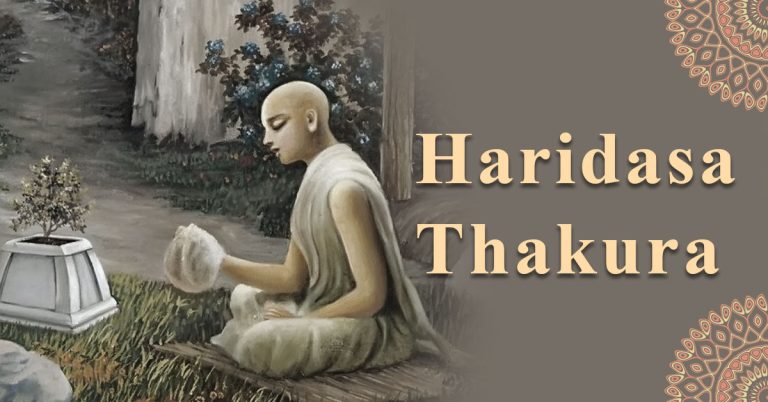Haridasa Thakura
Introduction:
The ninth and latest issue of Sajjana Toṣaṇī, titled ‘Śrī Śrī Hari Dāsa Issue,’ has been released. This issue focuses on the disappearance day of Śrī Śrī Hari Dāsa Thakura, which falls on Wednesday, the 7th of Aśvina this year. On this day, the devotees of Lord Caitanya, known as Vaiṣnava mahātmās, participate in a special ceremony called “viraha-mahotsava”. It is a celebration of separation.
Devotion Transcends Birth:
Hari Dāsa was born into a non-Hindu family. Some foolish people discard him as a ‘mleccha’. However, it’s important to note that if Krsna Bhakti arises in a low-born person, he becomes worshippable to all including the high-born people. There is numerous evidence in the scriptures in support of this.
Spiritual Journey:
Hari Dāsa was deeply devoted to Hari Bhakti from a young age. The local mlecchas did not like that. Despite their disapproval, Hari Dāsa was always engaged in devotion. Over time, Hari Dāsa faced persecution from the mlecchas due to their inherently cruel nature. Then he came to Phuliyā village, located on the banks of the Bhāgirathī. There he met Śrī Śrī Advaita Ācārya.
Final Days:
From there, Hari Dāsa came to Puri Dhama and started living there. He left his body while chanting Hari-nāma. Upon witnessing Hari Dāsa’s departure, Śrī Śrī Mahāprabhu and his followers were deeply saddened. Mahāprabhu then took Hari Dāsa’s pure body and placed him in samādhi on the ocean shore. The incredible life of Hari Dāsa is well-known among the Vaiṣṇava community.
[This is an abridged version of the essay “Śrī Śrī Hari Dāsa Ṭhākura” of Srila Bhaktivinoda Thakura, published in Sajjana Toṣaṇī, Vol.2 issue 9 in 1885.]














